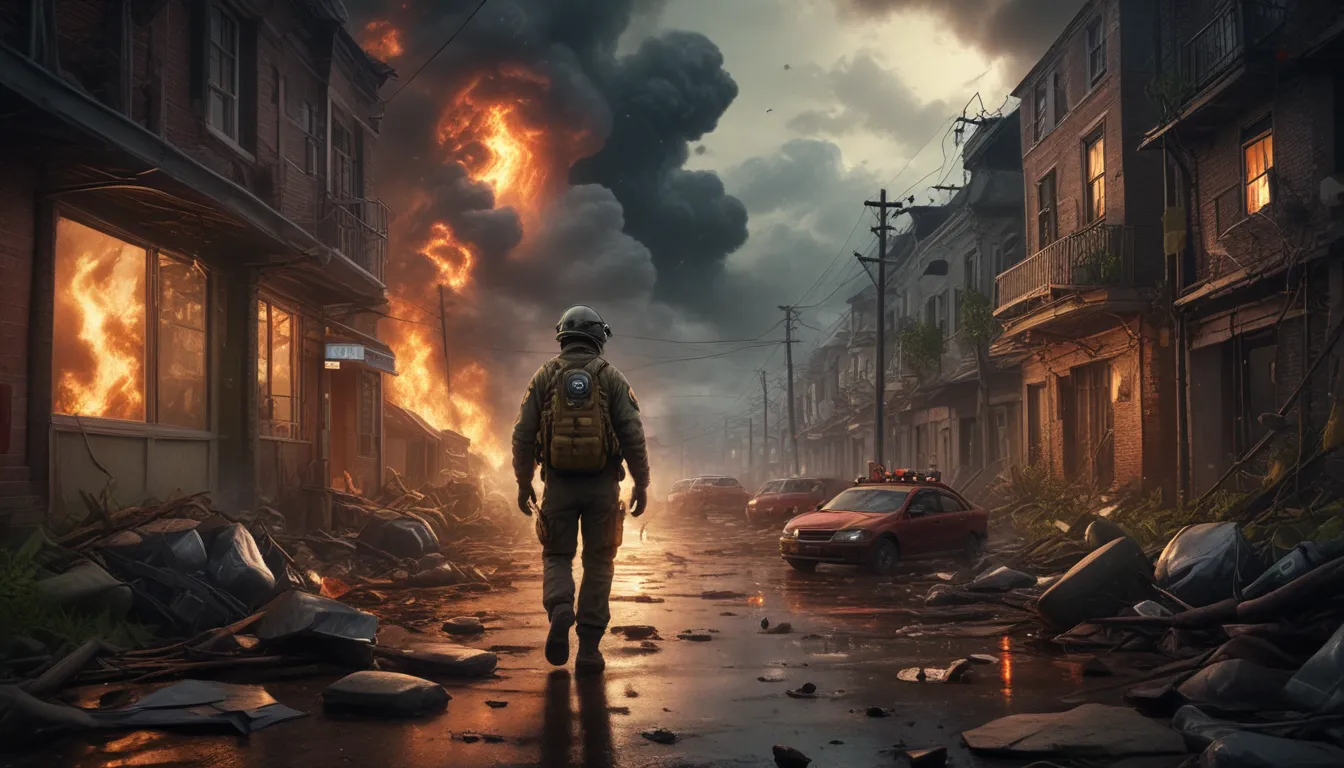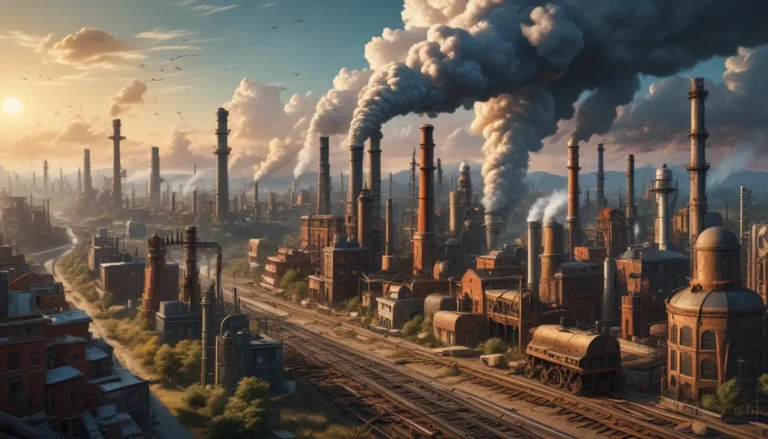A Note About Images: The images used in our articles are for illustration purposes only and may not exactly match the content. They are meant to engage readers, but the text should be relied upon for accurate information.
Disaster preparedness and response are vital components in safeguarding the safety and well-being of individuals and communities in the face of unexpected calamities. Whether it be natural disasters like hurricanes, tornadoes, earthquakes, and floods, or human-made disasters such as fires, pandemics, and terrorist attacks, being prepared can significantly reduce the impact and save lives.
In this article, we will explore 12 intriguing facts about disaster preparedness and response. These facts shed light on various aspects of this critical field, from the significance of early warning systems to the role of technology in disaster management. Whether you are a concerned citizen looking out for your own safety or a professional involved in emergency management, these insights will offer valuable knowledge and practical tips to navigate through crisis situations effectively.
Key Insights
- Be prepared! Disaster preparedness saves lives. Educate yourself, have a plan, and stay informed to protect your community from natural disasters.
- Technology and teamwork make a difference. Advanced tools and diverse specialists help respond effectively to disasters, providing aid and support to affected areas.
Earth-Shattering Facts
The Longest Earthquake Ever
Did you know that the longest recorded earthquake in history lasted a staggering 10 minutes? This seismic event took place on May 22, 1960, in Valdivia, Chile, with a magnitude of 9. It caused widespread devastation and spawned a tsunami that impacted countries as far as Hawaii, Japan, and the Philippines.
The Great Barrier Reef’s Marvel
The Great Barrier Reef, situated off the coast of Queensland, Australia, not only holds the title of the largest coral reef system globally but is also visible from space. Its vast expanse and vibrant colors make it a breathtaking sight that showcases the beauty and diversity of our planet.
The Deadliest Disaster
The Great China Flood of 1931 is often labeled as the deadliest natural disaster in recorded history. This catastrophic event claimed an estimated 2 to 4 million lives due to heavy rainfall and the overflow of the Yangtze and Huai rivers, leading to widespread flooding in central China.
Earthly Quirks and Unpredictability
Japan’s Seismic Reality
Japan experiences over 1,000 earthquakes annually, given its location in a seismically active region. While most of these quakes are minor and go unnoticed, the country’s advanced disaster preparedness systems help mitigate the impact of these frequent tremors.
Nature’s Colors
Tornadoes, typically associated with a dark gray hue, can actually form in a variety of colors. Reports have documented tornadoes in shades like white, red, blue, and even purple, resulting from the interaction of light with particles in the tornado.
Ashen Journeys
When a volcano erupts, it not only spews lava and gas but also sends volcanic ash into the atmosphere. This ash can travel great distances, carried by the wind. In 1815, the eruption of Mount Tambora in Indonesia saw ash clouds traverse over 1,500 miles, influencing global weather patterns and leading to the “Year Without a Summer.”
A Wave of Destruction
The Mega Tsunami
The Lituya Bay megatsunami, which occurred on July 9, 1958, holds the record for the tallest wave ever recorded. Triggered by an earthquake, this tsunami soared to a remarkable height of 1,720 feet (524 meters), causing extensive devastation in the surrounding area.
Being Prepared Saves Lives
The Importance of Preparedness
Disaster preparedness plays a crucial role in reducing loss of life and minimizing the impact of catastrophes. Communities equipped with well-developed preparedness plans and infrastructure are better positioned to handle emergencies effectively. Implementing measures like early warning systems, evacuation planning, and public awareness campaigns can significantly enhance outcomes during crises.
Diverse Response Teams
During disasters, emergency response teams encompass various specializations beyond medical and rescue personnel. Experts in logistics, communication, psychology, and engineering also contribute to a coordinated and effective response, addressing diverse challenges with a multidisciplinary approach.
Technological Advances in Disaster Response
Enhancing Response Efforts
Technological advancements have revolutionized disaster response efforts. Tools such as satellite imagery, drones, and real-time data analysis expedite the assessment of affected areas, identify critical needs, and ensure efficient resource deployment. Technology also aids in communication and coordination among response teams, streamlining humanitarian efforts.
Educating for Resilience
Creating awareness and educating communities about disaster preparedness are pivotal in mitigating disaster impact. Through education programs and public campaigns, individuals can learn about potential hazards, emergency protocols, and the importance of preparedness measures like emergency kits and evacuation plans. Cultivating a culture of readiness can save lives and build resilient communities.
Climate Change and Disaster Severity
Amplifying Disasters
Climate change substantially contributes to the escalation in both the frequency and severity of disasters. Global warming, melting glaciers, and shifting weather patterns create conducive conditions for extreme events like hurricanes, floods, and wildfires. Mitigating climate change through sustainable practices and reducing greenhouse gas emissions is essential for fortifying our planet against future disasters.
Conclusion: Building Resilient Communities
Disaster preparedness and response are pivotal in preserving the safety and well-being of individuals and communities. Understanding the enigmatic facts surrounding these topics equips us to better navigate and mitigate the impact of disasters. By staying informed, prepared, and proactive, we can collectively work towards fostering resilient communities capable of rebounding from disasters and safeguarding residents.
FAQs: Your Queries Answered
Why is disaster preparedness important?
Disaster preparedness is crucial as it facilitates readiness for unforeseen events, enabling a more effective response that minimizes disaster impact and reduces loss of life and property damage.
What should be included in an emergency kit?
An emergency kit should encompass essentials like water, non-perishable food, first-aid supplies, flashlights, batteries, a battery-powered radio, medications, important documents, and cash. Customizing the kit based on individual needs and location is vital.
How can individuals stay informed about potential disasters?
Individuals can stay informed by monitoring local news sources, signing up for emergency alerts, and keeping abreast of weather forecasts. Designating an emergency contact person to disseminate information in case communication lines are disrupted is also helpful.
What should I do during a disaster?
During a disaster, follow the instructions of authorities, seek shelter in a secure location, steer clear of windows and exterior walls, and stay tuned to emergency broadcasts for updates and directives. If evacuation is mandated, follow designated routes and carry necessary supplies.
How can I contribute to disaster response efforts?
Contributing to disaster response efforts can be done through donations to reputable disaster relief organizations, volunteering time and skills, participating in community drills and trainings, and raising awareness about disaster preparedness. Each act makes a valuable impact.
In conclusion, delving into the realm of disaster preparedness and response reveals a trove of fascinating and pertinent information. By embracing knowledge, preparedness, and proactive measures, we can fortify communities to weather disasters and uphold the safety and well-being of all.






